1,5 thousand Hiroshima: a chronicle of the most catastrophic volcanic eruption in the United States
On May 18, 1980, about three hundred people gathered to watch the eruption of St. Helens (meaning "St. Helena") in the state of Washington in the United States. Unfortunately, they did not know that instead of a beautiful sight, they would face real hell on earth. 42.TUT.BY recalls this day, which killed almost 60 people, and the terrain in the vicinity of the volcano turned into a lifeless landscape.
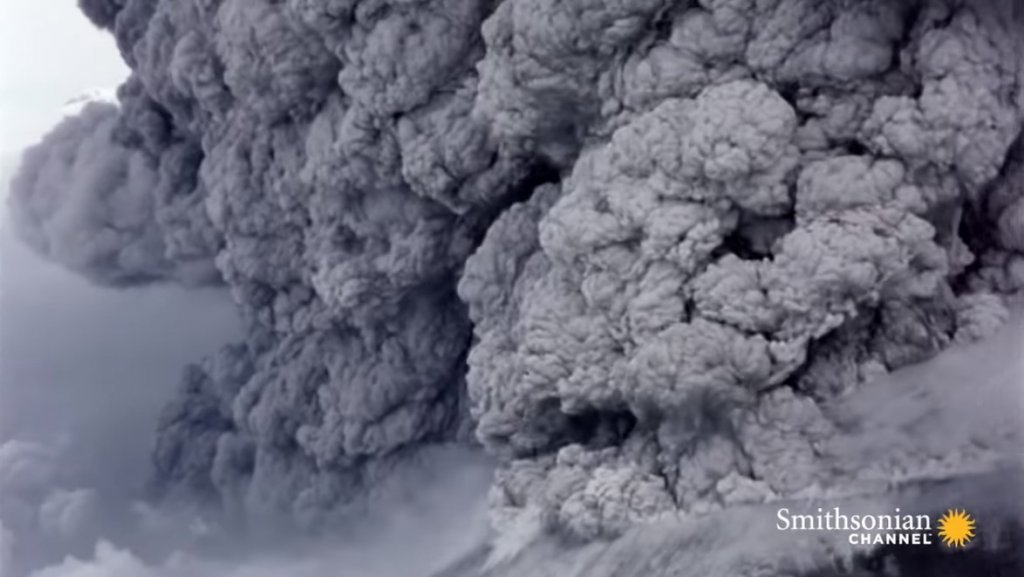
Photo: video frame YouTube / Smithsonian Channel
How it all began: small earthquakes and a stubborn old man at the foot of the mountain
The volcano of St. Helens was silent from its last activity in the 1840s and 1850s until March 1980. Several small earthquakes on March 15, 1980 showed that magma might have started under the volcano. On March 20, a small earthquake was recorded with the center under the northern slope, which signaled the awakening of the volcano after 123 years of hibernation.
After this, the area was shocked by a series of small earthquakes. Of course, this attracted the attention of seismologists. Researchers have compiled an array of data and then extrapolated them to fairly well-studied Hawaiian volcanoes. The result showed that somewhere in May we should expect a small emission of lava and volcanic ash. That is a colorful, but generally safe sight.
It is not surprising that the upcoming eruption attracted the attention of the press, which in every way covered this event, including through personal stories. For example, at that time, the real star of television was the 83-year-old World War I veteran Harry R. Truman, the namesake of one of the presidents of the United States.
The fact is that grandfather lived on the shore of Spirit Lake at the foot of St. Helens and flatly refused to leave his own home, despite the authorities announced a complete evacuation from the zone closest to the volcano.
Neither puffs of smoke nor periodic earthquakes scared him. In February 1918, then-still-22-year-old Private Truman survived the sinking of the SS Tuscania liner and was now not afraid of anything. Moreover, he felt on his “own” land: Truman settled with his wife on the shore of this lake in 1926 and for half a century managed the Mount St. Guest House Helens Lodge. After the death of his wife, the pensioner passed his days with 16 cats and a glass of whiskey.
Television companies often went to visit the colorful old man and willingly interviewed him, even despite the permanent profanity.
“I have no idea if this thing will explode or not,” Truman once told reporters. - If the mountain decides to leave, I will leave. Here, around the forest, between me and St. Helens, Spirit Lake is a mile from the volcano. The mountain will not hurt me. "I lived here for a very long time, I can’t last two weeks in a city apartment."
On May 18, he died during the eruption of the same volcano that had been its neighbor for many years.
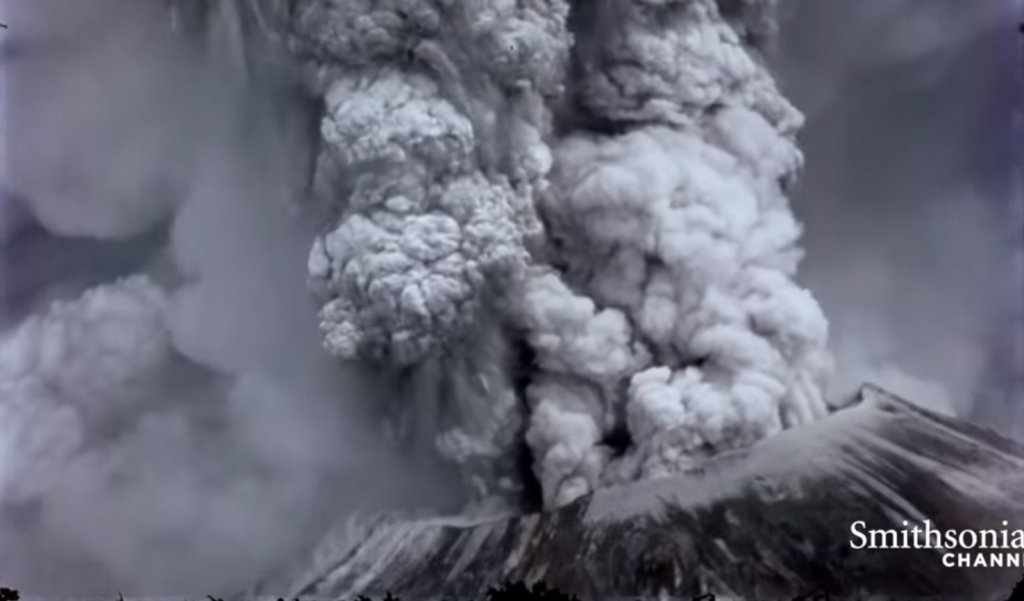
Photo: video frame YouTube / Smithsonian Channel
Day X: Explosion, equivalent to 1600 times the size of an atomic bomb dropped on Hiroshima
The hype in the press attracted simple onlookers (an observation platform about 30 kilometers from the proposed eruption site) for scientists, scientists (they were located closer, only 8-10 kilometers), as well as merchants and snacks. In total, about three hundred observers gathered near the volcano.
Unfortunately, they did not know that St. Helens is different from its Hawaiian counterparts: on its northern slope was a large weakened area. Plus, the crater of the volcano was as if sealed with a cork from frozen lava.
May 18, 1980 at 8.32 a.m. a powerful seismic shock brought down a rock layer on the northern slope of the volcano. Eight kilometers from the crater, volcanologist David Johnston shouted to his colleagues in Vancouver on the walkie-talkie: “It has begun!” This was his last word.
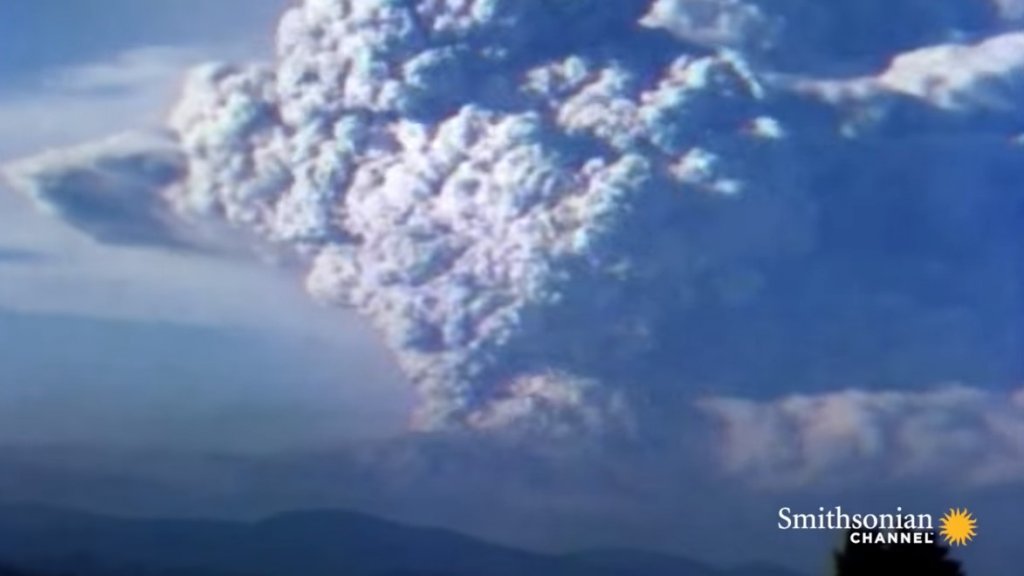
Photo: video frame YouTube / Smithsonian Channel
The entire weakened north side exploded with a force of approximately 24 megatons of thermal energy, equivalent to the 1600-fold size of an atomic bomb dropped on Hiroshima. The column of volcanic ash rose, according to various sources, from 17 to 24 kilometers up - subsequently, ash fell in 11 US states and two Canadian provinces. Snow and ice melted on the volcano, causing a series of volcanic landslides to reach the Columbia River, located almost 80 km to the south-west.
Although it is believed that lava flows are the most dangerous during a volcanic eruption, pyroclastic flows are much more deadly - a mixture of hot gases, ash and small stones, which moves at great speed, and the temperature inside can reach 700 degrees. For example, it was this phenomenon that killed the inhabitants of Pompeii.
On the subject: More dangerous than Yellowstone: a supervolcano in Antarctica can destroy half the planet
So, that day, a mudflow flowed down the slope of the volcano at a speed of 200–250 km / h, which was supplemented by fragments of volcanic rock from above and clouds of ash. Those who were within ten kilometers had no chance of survival at all. Tourists were more fortunate: the stream did not reach them in a few kilometers, but they caught flying stones and a cloud of volcanic ash with a temperature of 100-150 degrees above zero.
As a result, hundreds of square miles were turned into wasteland, thousands of animals were killed, and a crater formed on Mount North Helens on the north side.
According to official figures, more than 200 people suffered directly from the eruption. 57 were killed, including the brave Harry Truman, as well as the already mentioned volcanologist David Johnston, who was only 30 years old.
It is worth saying: although Johnston was sure that the eruption poses a threat to people, and even persuaded the authorities not to cancel the evacuation from the area near the volcano, he himself remained in the camp near St. Helens. In addition, photographers Reid Blackburn and Robert Landsburg were killed. The latter gained fame thanks to his dying photo.
For several weeks before the eruption, Landsburg repeatedly visited the volcano, photographing the changes taking place with it. On the morning of May 18, 1980, he was a few miles from the top. After the explosion of the volcano, apparently realizing that he would no longer have a chance of escape from the ash cloud, Robert remained in place and continued to photograph the volcano and the eruption to the very end. Then he rewound the tape into a cassette, put the camera in a backpack and put it under him. In this form, the body was discovered under a layer of ash seventeen days later.
The film in the camera was not affected and was developed, and the images from it helped geologists get a more accurate picture of the eruption.
In a radius of seven kilometers from the source they didn’t even look for bodies: the landscape there looked like a pristine Earth and smelled of sulfur. But studying the bodies in Pompeii allows us to judge that, most likely, people did not even have time to understand that they were dying, and died in less than a second from heat shock.
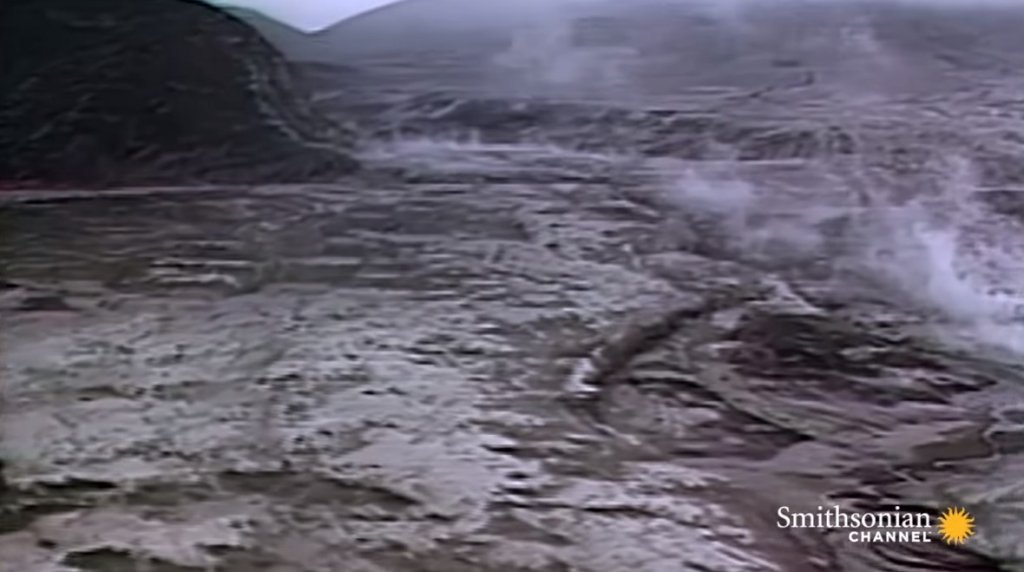
Photo: video frame YouTube / Smithsonian Channel
Consequences of the deadliest and most economically destructive volcanic eruption in US history
To help you understand how destructive the eruption was, we give an example: the city of Yakima, which was already 130 kilometers away, was covered with ashes, and visibility fell to three meters during the day. People went in masks so as not to suffocate. Ashes polluted the water, got into electrical appliances, so the city started having problems with electricity and water. Officially, four people died from the effects of the eruption: two crashed due to poor visibility, and two died of heart attacks.
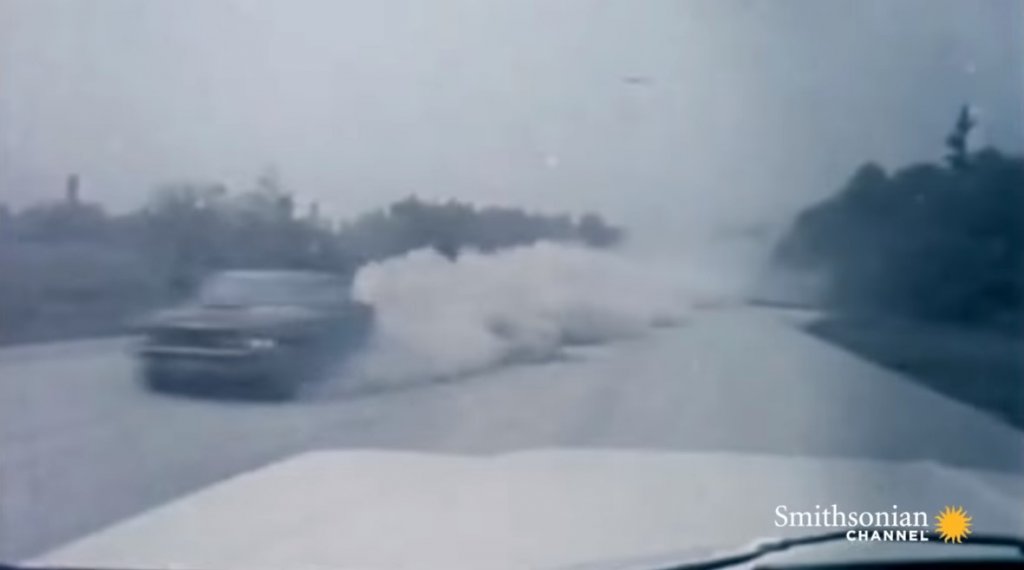
Photo: video frame YouTube / Smithsonian Channel
A landslide temporarily displaced north the waters of Spirit Lake, on the banks of which Harry Truman's house once stood. Later it revived 50 meters above the previous level, but was no longer clean and transparent - it looked like a smoking hole with a brown liquid.
Even after three decades, floating logs can be seen in the Spirit Lake and nearby St. Helens, carried down here.
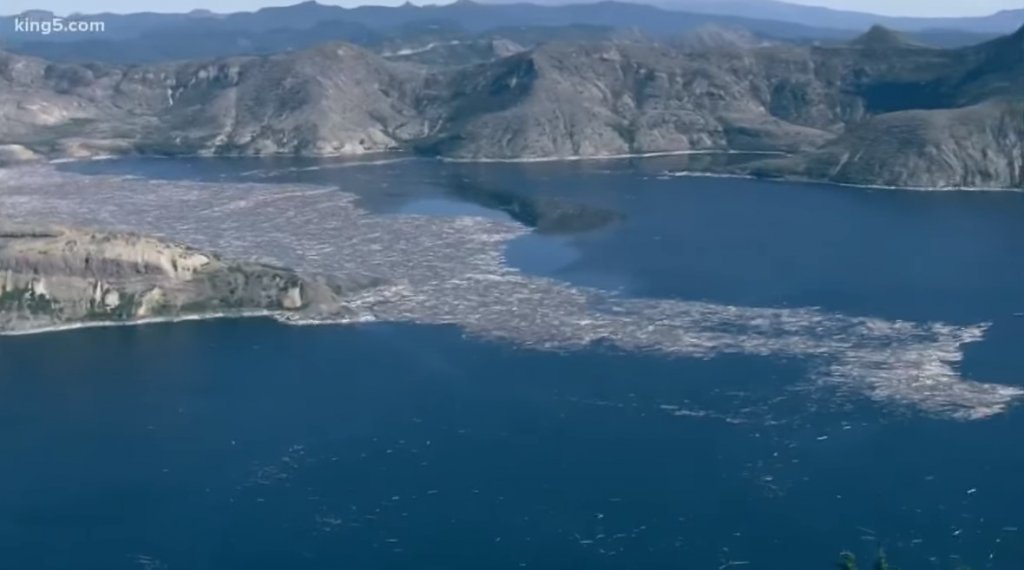
Photo: video frame YouTube / KING 5
At least 17 individual pyroclastic flows descended during the eruption, and their total volume was about 0,21 cubic kilometers.
The event of May 18, 1980 was the deadliest and most economically destructive volcanic eruption in US history. In addition to the death of 57 people directly from the explosion, it is worth noting that 200 houses, 47 bridges, 24 kilometers of railways and 298 kilometers of highways were destroyed. When then-US President Jimmy Carter flew over the area a few days later, he said: “Compared to this, the surface of the moon looks like a golf course.”
It is estimated that economic damage amounted to at least 1,1 billion US dollars (or 3,4 billion dollars for 2018). But there were indirect intangible costs. Unemployment in the immediate vicinity of St. Helens increased tenfold in the weeks after the eruption, and then returned to near normal levels after operations to collect wood and remove ash.
Only a small percentage of residents left the region due to job loss due to a natural disaster. A few months after May 18, several residents reported mental anguish and emotional problems, although they successfully coped with the crisis. They were assisted at the expense of the authorities.
On the subject: Disaster expert says what will happen to humanity in the event of a nuclear war
Despite these events, the decline in tourism was temporary. Subsequently, the mountain due to its gloomy halo even attracted new tourists.
Of course, it did not end on one eruption. But subsequent ejections of pyroclastic material from the fracture left by the landslide consisted mainly of new magmatic fragments, and not fragments of pre-existing volcanic rocks.
The volcano erupted five more times from May to October 1980. At the beginning of 1990, at least 21 episodes of the eruption were recorded. And the volcanic activity on Mount St. Helens in 2004-2008 was documented as a continuous eruption with a gradual loss of magma. This activity continued until January 2008.
The landscape near the mountain was preserved, the National Volcanic Monument was built here, and an observatory was built on the nearby ridge, which received the name of the deceased volcanologist Johnson.
Read also on ForumDaily:
For adrenaline lovers: 9 of the most extreme amusement parks in the world
Sun reduces activity: 30-year 'mini-ice age' awaits Earth
Ten places on Earth where people will not be allowed even for a lot of money
Subscribe to ForumDaily on Google NewsDo you want more important and interesting news about life in the USA and immigration to America? — support us donate! Also subscribe to our page Facebook. Select the “Priority in display” option and read us first. Also, don't forget to subscribe to our РєР ° РЅР ° Р »РІ Telegram and Instagram- there is a lot of interesting things there. And join thousands of readers ForumDaily New York — there you will find a lot of interesting and positive information about life in the metropolis.











